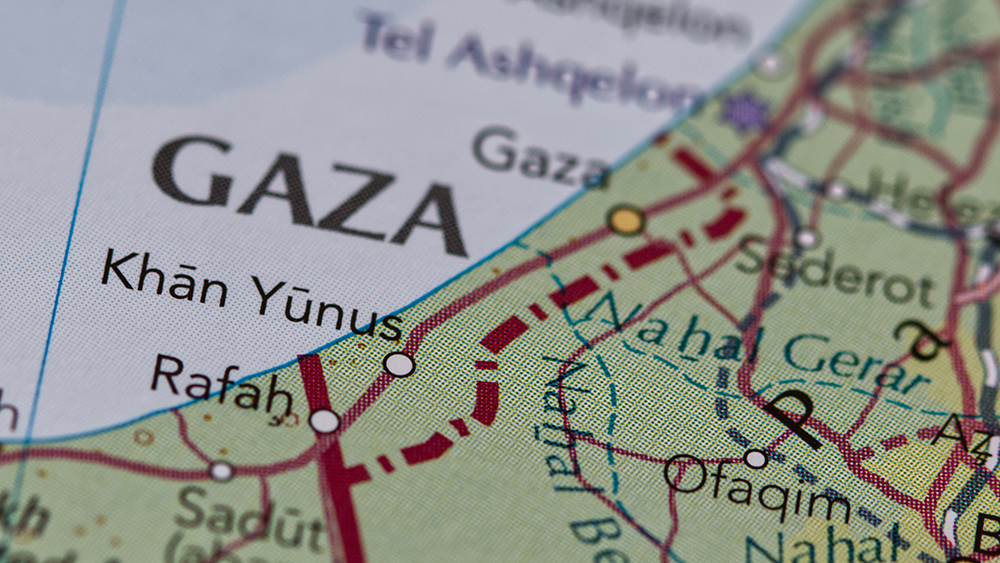NATO aiming to provide Ukraine 40 billion euros annually
07/09/2024 / By Richard Brown

Members of the North Atlantic Treaty Organization (NATO) are aiming to provide Ukraine with at least €40 billion ($43.3 billion) a year in military aid.
Despite initial enthusiasm, several member states have found it politically and legally difficult to commit to a specific amount for several years. Instead, according to Bloomberg, the 32 members of the alliance have set a target with the proviso that it will be reviewed every year. (Related: NATO chief calls for annual contribution of 40 BILLION EUROS for Ukraine until Russia is defeated.)
The target could therefore increase or decrease depending on the situation.
Funding for this year is well above the target, with the United States alone committing $60 billion. According to the plan, member states’ donations will also depend on the size of their economies.
The funding pledge will still need to be endorsed by member state leaders and will be part of the package for Ukraine to be presented at the NATO summit set in Washington D.C. on July 9 to 11.
The proposal is intended to underline NATO’s commitment to support Kyiv in the long term and pave the way for Ukrainian membership of NATO. The organization’s outgoing Secretary General Jens Stoltenberg originally wanted to secure $100 billion over five years before the €40 billion a year plan was formulated.
NATO also wants to play a greater role in identifying what military equipment Ukraine needs, coordinating arms deliveries and training Ukrainian troops, in parallel with the U.S.-led Ramstein format, so-named after the U.S.-organized international conference held at the Ramstein Air Base in Germany.
Ahead of the summit, there has also been much debate in the alliance over what should be included in the final statement of the meeting on Ukraine’s path to NATO membership, but Kyiv is not expected to be invited to join the alliance this year due to opposition from the U.S. and Germany.
The decision to centralize coordination of arms supplies to Ukraine under NATO’s umbrella is widely perceived as a measure to safeguard against potential shifts in U.S. policy, commonly referred to as “Trump-proofing.”
By giving NATO a more direct role in managing support operations against Russia, this approach falls short of committing NATO forces but aims to ensure continuity and reliability in aid efforts.
However, diplomats caution that this strategy may be ineffective, given the United States’ dominant position within NATO and its substantial contribution to Ukraine’s military capabilities. Should Washington decide to reduce Western aid to Kyiv, it retains the capability to do so, underscoring ongoing uncertainties despite NATO’s operational adjustments.
Ukraine advised to address corruption concerns
In the lead-up to the Washington summit, NATO allies remain divided over the language and implications surrounding Ukraine’s prospective membership in the alliance, an issue championed by President Volodymyr Zelensky.
Ukraine has been advised to address corruption concerns, which currently impact its standing on international corruption indices, lagging behind countries like Belarus and Kazakhstan.
NATO’s official stance asserts that Ukraine will eventually join the alliance, contingent on the country achieving stability and peace. At the Vilnius summit last year, Ukrainian leaders affirmed their commitment to NATO, with some allies advocating for stronger assurances that Ukraine’s path to membership is “irreversible.”
Amid these deliberations, NATO member Turkey has emerged as a potential mediator in the conflict, with Turkish President Recep Tayyip Erdogan proposing dialogue with Russian President Vladimir Putin to seek a mutually acceptable resolution.
Simultaneously, the impending expiration of the gas transit agreement between Moscow and Kyiv, which facilitates Russian gas shipments to Europe via Ukraine, poses additional challenges. Russian Deputy Prime Minister Alexander Novak indicated readiness to continue gas supplies post-agreement, contingent on Ukraine’s willingness to maintain the arrangement.
The future of gas transit through Ukraine remains pivotal for European energy security, particularly for central European nations reliant on this route. Despite reductions in Russian gas exports following geopolitical tensions, energy dynamics continue to shape regional stability and economic relations between Russia, Ukraine and the European Union.
Visit UkraineWitness.com for similar stories.
Listen to the Health Ranger Mike Adams explaining that the U.S. and NATO have already decided to take the American people to war below.
This video is from the Health Ranger Report channel on Brighteon.com.
More related stories:
NATO plans to expand defense tech, intelligence sharing with Ukraine.
NATO offers Ukraine a new HQ in Germany – a “bridge” to Kyiv’s eventual membership.
NATO secretary general suggests putting more NUCLEAR WEAPONS on standby.
Sources include:
Submit a correction >>
Tagged Under:
big government, chaos, conspiracy, corruption, finance riot, government debt, insanity, military aid, money supply, national debt, national security, NATO, North Atlantic Treaty Organization, Russia, Russia-Ukraine war, Ukraine, WWIII
This article may contain statements that reflect the opinion of the author
RECENT NEWS & ARTICLES
COPYRIGHT © 2018 GOVERNMENTDEBT.NEWS
All content posted on this site is protected under Free Speech. GovernmentDebt.news is not responsible for content written by contributing authors. The information on this site is provided for educational and entertainment purposes only. It is not intended as a substitute for professional advice of any kind. GovernmentDebt.news assumes no responsibility for the use or misuse of this material. All trademarks, registered trademarks and service marks mentioned on this site are the property of their respective owners.



















